An iconic Bronze Age burial from Egtved, Denmark is yielding some surprises. The burial contained the remains of a teenage girl who had died about 3,400 years ago. Now, a new analysis of her hair and nails suggests that the girl may have actually come from very far away. [Read the full story on the iconic Danish burial]
Danish Icon
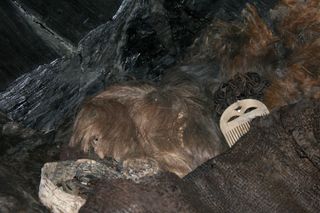
The girl was first unearthed in 1921 in the village of Egtved, Denmark. The burial was in a large peat mound, inside an oak coffin. The peat had leached acidic water into the coffin, which had eaten away her bones. However, the lack of oxygen in the coffin left her hair, scalp and part of her brain, as well as her clothing, in nearly perfect condition. (Photo credit: Karin Margarita Frei, National Museum of Denmark)
Sun Priestess
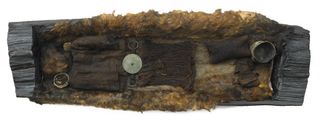
The girl, who was between 16 and 18 years old, wore a wool miniskirt and a shirt resembling a t-shirt. Her outfit (shown here) was belted with a large bronze disk that bore spiral designs on it. Bronze Age figurines tied to a Scandinavian sun cult depict women in very similar dress, leading historians to surmise that the woman was an ancient cultic priestess.(Photo credit: Roberto Fortuna, with kind permission of the National Museum of Denmark
Little one
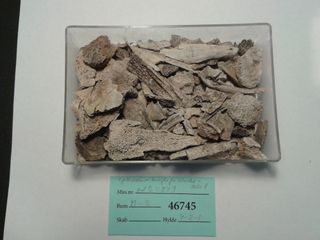
The burial also contained the cremated remains of a child who was about 5 or 6 years old when he or she died. Though most people think cremated remains completely turn to ash, in fact, many of the bones remain in identifiable form, as shown here. There was no usable DNA found in either the cremated remains or the Egtved girl herself, so there is no way to know how the two are related, though they must have been close if they were buried together in such a lavish tomb. (Photo credit: Karin Margarita Frei, National Museum of Denmark)
Sign up for the Live Science daily newsletter now
Get the world’s most fascinating discoveries delivered straight to your inbox.
Foreign wool
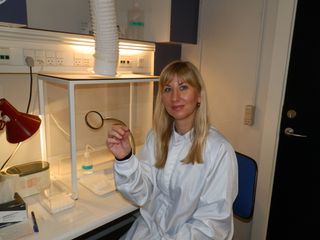
Karin Frei (shown here holding a molar from the Egtved girl), a geologist at the National Museum of Denmark, was studying the origins of the wool skirt by analyzing the ratio of strontium isotopes, or atoms of the element with different numbers of neutrons. Rock in different regions of the world has different isotopic ratios, and because elements in the soil are taken up by the plants and animals that live in the region, the isotopic signature in materials can reveal where a person or animal lived. Frei came upon an unexpected finding: The wool skirt came from an entirely different location, far outside Denmark. That was a shock, because nothing about the burial suggested it was of a woman of foreign origin. (Photo credit: Karin Margarita Frei, National Museum of Denmark)
Hair story

To understand more, Frei and her colleagues analyzed the levels of strontium in the hair of the Egtved girl. The hair, which was in near-perfect condition, was about 9.4 inches (23 centimeters) long at its longest point, which corresponds to about 23 months of hair growth. The team found that the girl spent much of her last two years traveling to a place distant from where she was buried. A similar analysis of the cremated child suggests the little one also spent a significant amoutn of time in the same distant locale. Here, a closeup of the hair, still in perfect condition. (Photo credit: Karin Margarita Frei, National Museum of Denmark)
Hints of early life
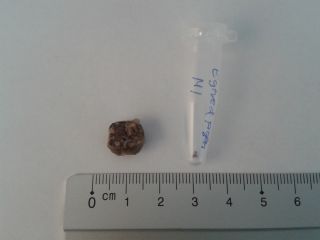
Samples from a portion of the Egtved girl's molar revealed that the girl was also born, or at least spent her very early years, in the same distant place. Based on the isotopic signature in the hair, she may likely have hailed from southern Germany. Because that region and Denmark were both centers of power at the time, the archaeologists involved in the work hypothesize that she may have been born in Germany but married to a local Danish chieftain. Here is a closeup of the molar analyzed. (Photo credit: Karin Margarita Frei, National Museum of Denmark)
Nail in the coffin

The fingernails found in the coffin told a similar tale. Given the rate at which strontium isotopes are incorporated into human tissue, the nails could reveal where the Egtved girl was living over the last six months of her life. The nail, like her hair, revealed that she spent the most of the last six months of her life far away from Denmark, likely in southern Germany. One possibility is that the girl was returning to her homeland for some reason, and that both she and the child fell ill along the way, Frei speculates. (Photo credit: Karin Margarita Frei, National Museum of Denmark)

Tia is the managing editor and was previously a senior writer for Live Science. Her work has appeared in Scientific American, Wired.com and other outlets. She holds a master's degree in bioengineering from the University of Washington, a graduate certificate in science writing from UC Santa Cruz and a bachelor's degree in mechanical engineering from the University of Texas at Austin. Tia was part of a team at the Milwaukee Journal Sentinel that published the Empty Cradles series on preterm births, which won multiple awards, including the 2012 Casey Medal for Meritorious Journalism.
